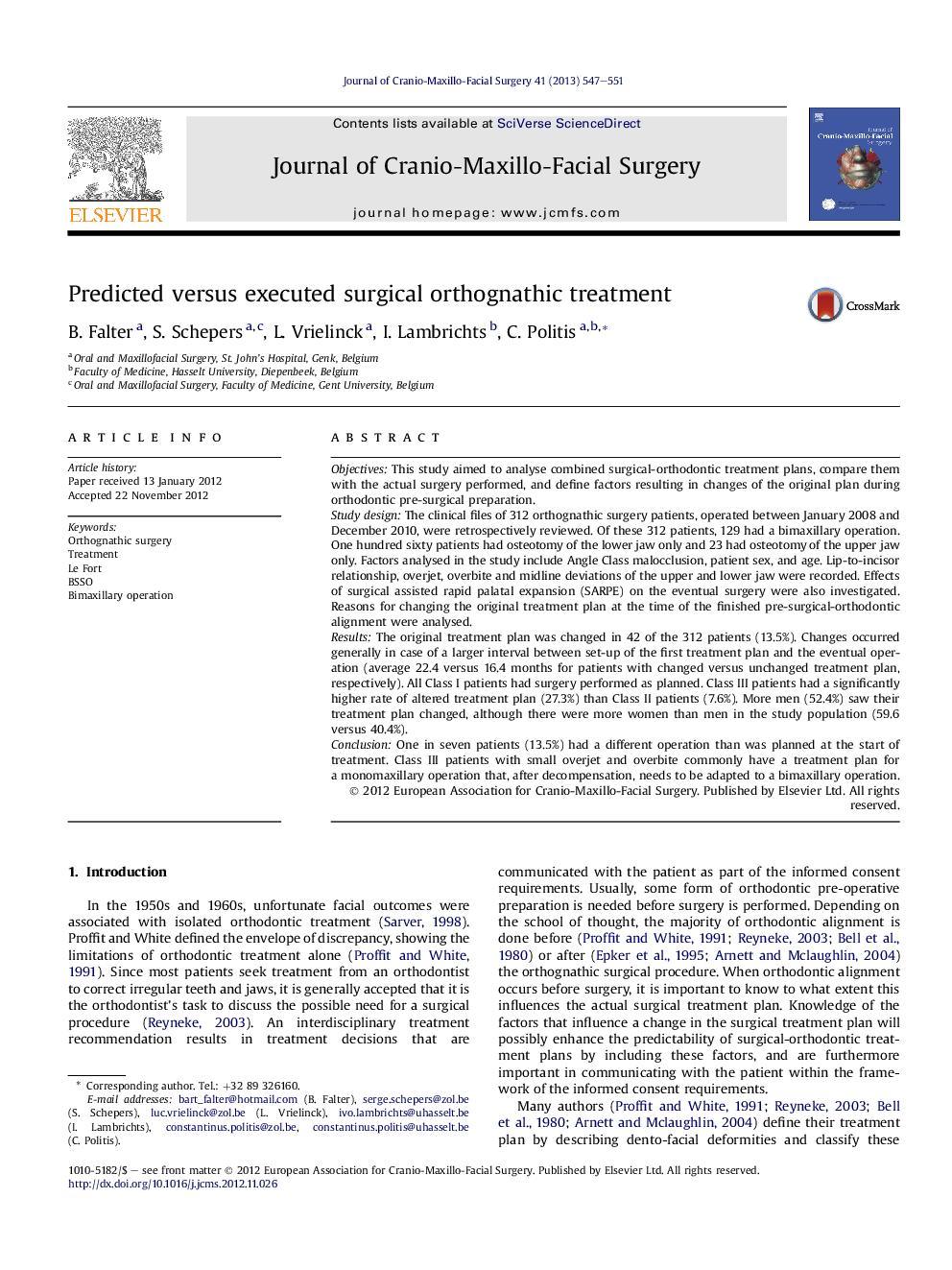| کد مقاله | کد نشریه | سال انتشار | مقاله انگلیسی | نسخه تمام متن |
|---|---|---|---|---|
| 6052848 | 1196800 | 2013 | 5 صفحه PDF | دانلود رایگان |
ObjectivesThis study aimed to analyse combined surgical-orthodontic treatment plans, compare them with the actual surgery performed, and define factors resulting in changes of the original plan during orthodontic pre-surgical preparation.Study designThe clinical files of 312 orthognathic surgery patients, operated between January 2008 and December 2010, were retrospectively reviewed. Of these 312 patients, 129 had a bimaxillary operation. One hundred sixty patients had osteotomy of the lower jaw only and 23 had osteotomy of the upper jaw only. Factors analysed in the study include Angle Class malocclusion, patient sex, and age. Lip-to-incisor relationship, overjet, overbite and midline deviations of the upper and lower jaw were recorded. Effects of surgical assisted rapid palatal expansion (SARPE) on the eventual surgery were also investigated. Reasons for changing the original treatment plan at the time of the finished pre-surgical-orthodontic alignment were analysed.ResultsThe original treatment plan was changed in 42 of the 312 patients (13.5%). Changes occurred generally in case of a larger interval between set-up of the first treatment plan and the eventual operation (average 22.4 versus 16.4 months for patients with changed versus unchanged treatment plan, respectively). All Class I patients had surgery performed as planned. Class III patients had a significantly higher rate of altered treatment plan (27.3%) than Class II patients (7.6%). More men (52.4%) saw their treatment plan changed, although there were more women than men in the study population (59.6 versus 40.4%).ConclusionOne in seven patients (13.5%) had a different operation than was planned at the start of treatment. Class III patients with small overjet and overbite commonly have a treatment plan for a monomaxillary operation that, after decompensation, needs to be adapted to a bimaxillary operation.
Journal: Journal of Cranio-Maxillofacial Surgery - Volume 41, Issue 7, October 2013, Pages 547-551
